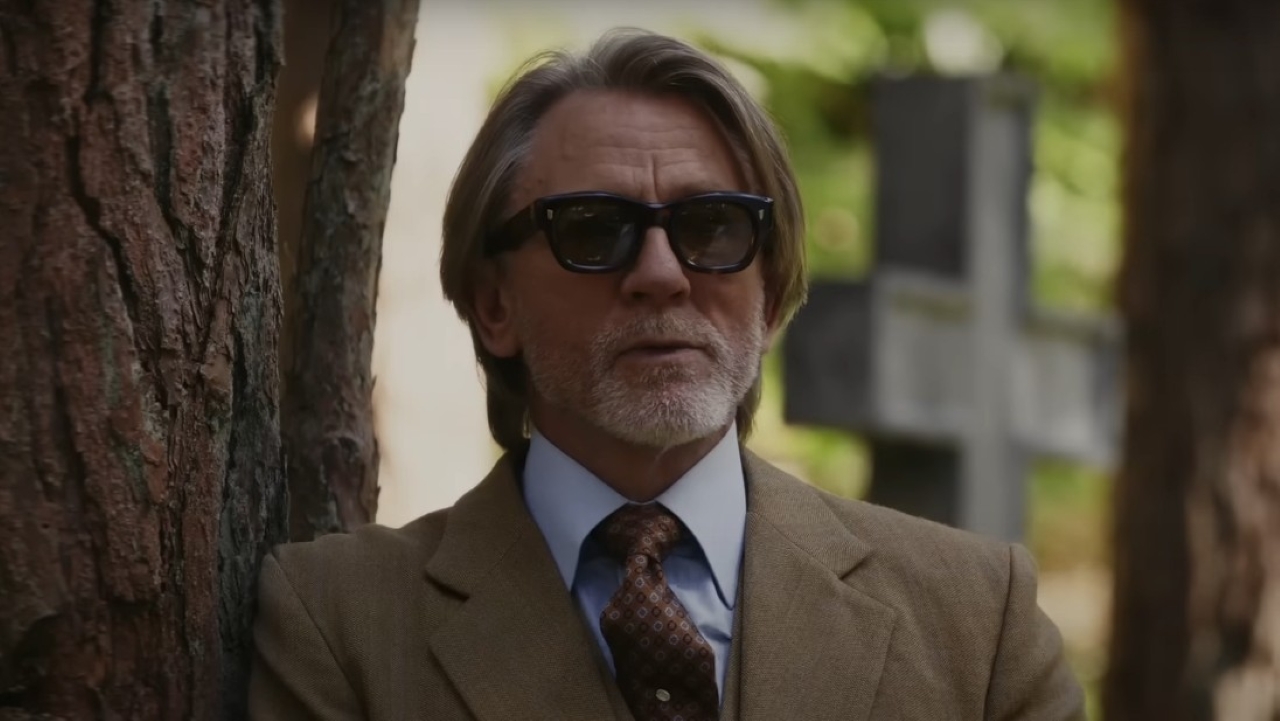To 3D Or Not To 3D: Buy The Right Green Lantern Ticket

This summer has been packed to the gills with 3D movies, with a new title practically coming out every single week. I remember a time not so long ago when theaters were concerned that there wouldn’t be enough between 3D movies for each one to gets its fair shake. Now digital projection is ubiquitous and I’m here to review the usage of the new technology in Martin Campbell’s Green Lantern.
While the movie hasn’t been doing so great with critics in general (check out our own Katey Rich’s review right HERE), it’s expected that fans of the comic book character and the genre in general will show up to see the movie this weekend. So, here’s the question: do you spend a few extra George Washingtons on the 3D or do you save that money and put it towards the popcorn and soda? Check out our full breakdown of Green Lantern’s 3D below.
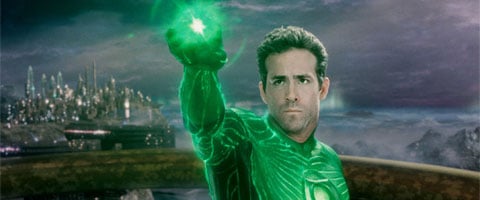
Does It Fit?
One of the major reasons Avatar was such a stunning 3D achievement is because approximately 60% of the entire film was constructed using computer generated imagery. The same rule applies to animated films like Legend of the Guardians, which currently holds the record for highest To 3D Or Not To 3D score. The reason for this is that the more you create in a world, the more control you have to adjust and move what you’ve created in a 3D space. Green Lantern fits snugly into this category. Every scene that takes place on the alien planet Oa is almost entirely CGI. Throw in the fact that this is a superhero film with plenty of action and you have what we like to call a perfect fit for the 3D format.
Fit Score: 5/5
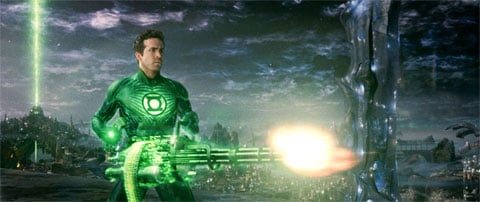
Planning & Effort
Let it be known: Green Lantern was not shot in 3D. Rather, like Green Hornet, Alice in Wonderland and The Last Airbender, Martin Campbell’s film has been post-converted. Before you start throwing tomatoes, however, it is important to note that the decision to add 3D later was planned long before the extended post-production schedule. Why does that matter? As mentioned above, the film uses a great deal of CGI and the folks behind the visual effects constructed that with 3D in mind. Sadly, not shooting in 3D did negatively affect the Earth-bound scenes, which will hurts the movie’s overall score.
Planning & Effort Score: 3/5
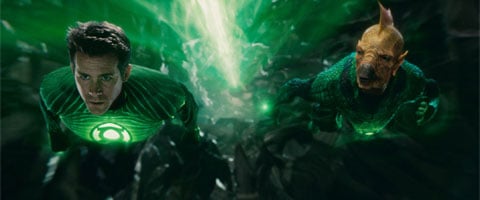
Beyond the Window
Your Daily Blend of Entertainment News
While I understand that some of our readers are sick of having to read explanations about what this means every time we run one of these features, it’s important that new readers understand what the hell we’re talking about, so I’ll make this brief. When we say “Beyond The Window” we are referring to the sense of depth that a 3D movie provides. You may start noticing a theme developing here, but there are some parts of Green Lantern that use this effectively, while others don’t use it at all. The film begins with an incredible Geoffrey Rush-narrated explanation about the birth of the universe that is absolutely stunning and makes the audience feel like they’re going to fall into the screen. This is actually a fairly common feeling while watching scenes on Oa. Sadly, the same can’t be said for scenes on Earth, which, with the exception of a few, are rather flat. Because of this dichotomy, I have no choice but to split the score in half.
Beyond The Window Score: 2.5/5
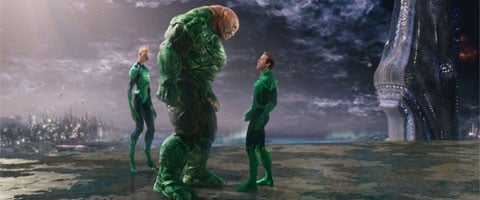
Before the Window
Again, I’ll keep this short and sweet: while “Beyond The Window” is in reference to the sense of depth, “Before The Window” is an analysis of how effectively things come flying out of the screen towards the audience. While Green Lantern never explores the full potential of 3D technology in this department, it does surpass the sense of depth in that it’s more consistent throughout the entire film. There are multiple instances both on Oa and on Earth where Hal Jordan (Ryan Reynolds) uses his ring to create green energy constructs that either fly out at the screen or fire projectiles that look as though they are being launched into the audience. Naturally it’s at its best during the action sequences, but there’re plenty of those to go around.
Before The Window Score: 3/5
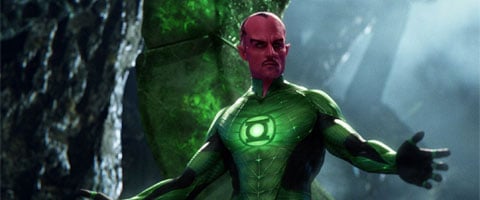
Brightness
Even James Cameron would agree: the biggest roadblock in 3D technology is brightness. Because we haven’t reached the point where audiences can watch 3D movies without the aid of glasses, we are forced to watch through murky lenses that can hamper the look of the film. While there’s no way to fix this completely, there are measures that filmmakers can take to improve the brightness of a 3D film, and Martin Campbell has taken them with Green Lantern. While likely not as vibrant as 2D print would look, the movie never succumbs to the murky muddiness seen in more under-developed 3D films. There has been some controversy about this lately, so I’ll also mention that I watched the film at an AMC Theater in Los Angeles. Use that information however you like.
Brightness Score: 5/5
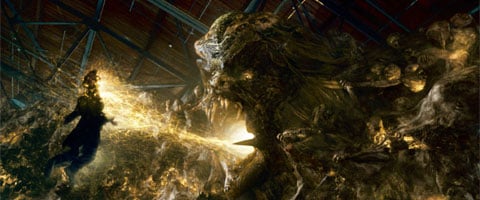
The Glasses Off Test
While watching a 3D film, taking off your glasses can be quite an effective way to gauge just how intense the experience is. Because the technology works by sending separate images to your left and right eyes, the best 3D movies are completely blurry except for the item or person that’s meant to be in focus. In the case of Green Lantern this is inconsistent. The scenes set on Oa, where CGI is most prevalent, are incredibly blurry, demonstrating that they use 3D to great effect, while scenes set on Earth might as well be 2D in many cases. It’s the Judgment of Solomon all over again, people. We’re splitting the score in half.
Glasses Off Score: 2.5/5
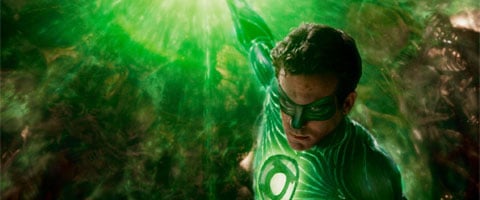
Audience Health
There are people out there that can’t watch 3D, and I’m not just talking about the one-eyed folks among us. Some sections of movie-going audiences have been known to experience extreme motion sickness and/or headaches while watching films in the third dimension. This is often completely subjective, but it also tends to happen in films where the focal point shifts a lot and viewers strain their eyes to keep focused. It should be noted that I rarely feel these effects, but I left my screening of Green Lantern feeling perfectly fine and in zero pain.
Health Score: 5/5
| SCORES RECAP | |
| 3D Fit | 5 |
| Planning and Effort | 3 |
| Beyond The Window | 2.5 |
| Before The Window | 3 |
| Brightness | 5 |
| The Glasses Off Test | 2.5 |
| Audience Health | 5 |
| Total Score | 26 (out of a possible 35) |
This poll is no longer available.
Final Verdict: A final score of 26 may not seem that great, but the truth is that this is actually the best post-converted 3D I’ve seen so far (the previous record holder in this category was The Green Hornet with a score of 25). Still, it’s a mediocre score. Basically, for this title it comes down to how you feel about 3D: if you like watching movies with the added technology, go ahead and see Green Lantern in 3D with the assurance that you won’t be totally wasting your money. If you’re not a fan of 3D, find a theater showing Green Lantern in 2D and know that you’re not missing much.
For more 3D analysis, visit our To 3D Or Not To 3D archive right here.

Eric Eisenberg is the Assistant Managing Editor at CinemaBlend. After graduating Boston University and earning a bachelor’s degree in journalism, he took a part-time job as a staff writer for CinemaBlend, and after six months was offered the opportunity to move to Los Angeles and take on a newly created West Coast Editor position. Over a decade later, he's continuing to advance his interests and expertise. In addition to conducting filmmaker interviews and contributing to the news and feature content of the site, Eric also oversees the Movie Reviews section, writes the the weekend box office report (published Sundays), and is the site's resident Stephen King expert. He has two King-related columns.
